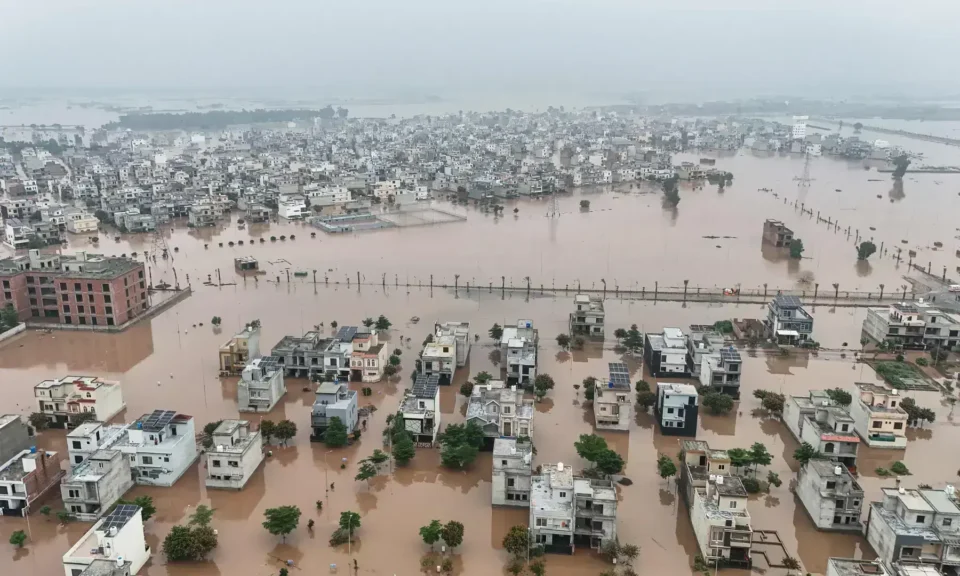Pakistan’s 2025 Floods: A Crisis That Demands Real-Time Planning and Resilience
By Muhammad Ehsan Leghari | Published September 10, 2025 | Updated 3 hours ago
Pakistan is once again under water. The 2025 floods have carved a devastating path through South Punjab, now surging into Sindh with greater intensity. Entire villages are submerged, livelihoods washed away, and millions displaced.
According to official estimates, the disaster has already claimed over 842 lives (some reports suggest more than 1,000), displaced 1.2 million people, and impacted over 4 million residents. Economic losses are expected to hit $6–10 billion, making this one of the worst floods in recent history.
Yet, amid tragedy lies opportunity: Pakistan can transform this disaster into a turning point for disaster preparedness and resilience.
A Nation Under Water
The 2025 monsoon has unleashed both river and rain-induced flooding.
-
In South Punjab, districts like Multan, Bahawalpur, and Dera Ghazi Khan are underwater, with 1,400 villages submerged under 5–10 feet of water.
-
In Sindh, the Guddu Barrage braces for peak inflows of 800,000 cusecs, threatening 1.6 million residents in riverine areas.
-
Urban centers — Lahore, Rawalpindi, Karachi, and Hyderabad — face flash floods worsened by poor drainage and rapid urbanization.
The parallels to the 2022 floods, which displaced 33 million people, are haunting. This year, however, the intensity is even higher due to climate change and upstream water flows from India.
Why Real-Time Planning Matters
Relief operations save lives, but long-term resilience requires planning as floods unfold. Experts point to the World Meteorological Organization’s Integrated Flood Management (IFM) framework, which stresses real-time data, satellite monitoring, and community voices.
“Every crisis is a classroom. Notes taken today on what fails, what works, and who suffers most can rewrite tomorrow’s playbook,” says water and disaster expert Naseer Memon.
Platforms like NASA’s Precipitation Monitoring Mission and Google Flood Hub already offer vital data — but Pakistan must integrate these into policy and planning.
Women at the Center of Resilience
Floods hit women hardest. They make up 60% of camp populations, yet often face limited mobility, lack of privacy, and risks of gender-based violence.
In 2022, exclusion of women’s voices led to mismatched aid distribution. This time, community-driven solutions — from hygiene facilities to safer housing — must be prioritized. Successful models from Bangladesh — such as elevated homes and floating gardens — cut flood damages by 40% and offer lessons Pakistan can adapt.
Bottlenecks in Rescue Efforts
Despite 155,000 rescues in Punjab, systemic gaps remain:
-
Shortage of boats and helicopters has left families stranded.
-
Supply chains collapse as roads are washed away.
-
Hospitals struggle with over 1,117 injuries and looming cholera outbreaks.
-
Urban markets, especially in Hyderabad, face 10–14-hour power outages, worsening flood impacts.
Experts warn Pakistan’s outdated water distribution system and weak urban planning amplify the crisis.
Learning from Global Best Practices
Countries worldwide offer models for Pakistan:
-
Japan: Detention systems and permeable pavements reduce flood runoff by 75%.
-
Jakarta: Tidal barriers and community warnings tackle both river and rain floods.
-
Bangladesh: Community radios and the Delta Plan 2100 improve disaster preparedness.
-
Netherlands: Long-term flood defenses integrated into national planning.
For Pakistan, adopting a localized version of these strategies — supported by real-time documentation, gender inclusion, and basin-level planning — could change the game.
A Checklist for the Future
To ensure preparedness, experts recommend:
-
Daily Documentation: Track rescue delays, supply chain gaps, and on-ground needs at the tehsil level.
-
Mapping Patterns: Use satellite data to monitor inundation and water gradients.
-
Community Engagement: Prioritize women’s voices in planning.
-
Infrastructure Audits: Identify weak points in dams, drains, and canals.
-
Urban-Rural Integration: Use climate modeling to manage both river and rain floods.
-
Post-Flood Audits: Evaluate and refine strategies after each disaster.
Turning Crisis into Opportunity
The 2025 floods are more than a disaster — they’re a wake-up call. By combining global expertise with local voices, Pakistan can break the cycle of devastation.
If lessons are documented today — from bottlenecks to success stories — they can form the foundation of a safer, more resilient Pakistan.
With global wisdom and local resolve, this crisis can become the spark for a revolution in disaster preparedness — ensuring that no future flood catches the nation off guard again.

